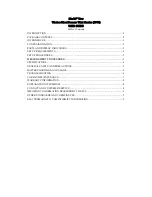
EN
17
WatchBP O3
Special functions
Screening for atrial fibrillation during blood
pressure measurement
The device is designed to screen for atrial fibrillation
during blood pressure measurements (optional) with high
accuracy: a sensitivity of 98% and a specificity value of
92%*. If atrial fibrillation is detected this will be shown in
the report.
About Atrial Fibrillation
Atrial fibrillation is a common heart rhythm problem and a
common cause of major strokes. It affects 8% of those 65
years and older and about 20% of all strokes are caused
by atrial fibrillation. Atrial fibrillation is a rhythm problem
that can last from a few minutes, to days or weeks and
even years. Atrial fibrillation can lead to the formation
of blood clots in the heart. These clots can break off
and flow to the brain causing stroke. One sign of atrial
fibrillation is palpitations. However, many people have no
symptoms and therefore may remain undetected whereas
diagnosing atrial fibrillation early followed by adequate
treatment can largely reduce the chance of getting a
stroke.
Central blood pressure parameters
The device is designed to take central blood pressure
parameters (optional).
Central blood pressure is the pressure in the ascending
aorta, the largest artery that originates from the left
ventricular of the heart and from where oxygen is
distributed to all parts of the body through the systemic
circulation. Central Systolic Blood Pressure and Central
Pulse Pressure by this monitor is determined directly
through pulse volume plethysmography (PVP) waveform
analysis. Central Diastolic Blood Pressure by this monitor
is calculated by subtraction of Central Systolic Blood
Pressure and Central Pulse Pressure.
Verberk et al. Screening for atrial fibrillation with automated blood pressure
measurement: Research evidence and practice recommendations. Int J Cardiol
2016: 465–473
*
















































